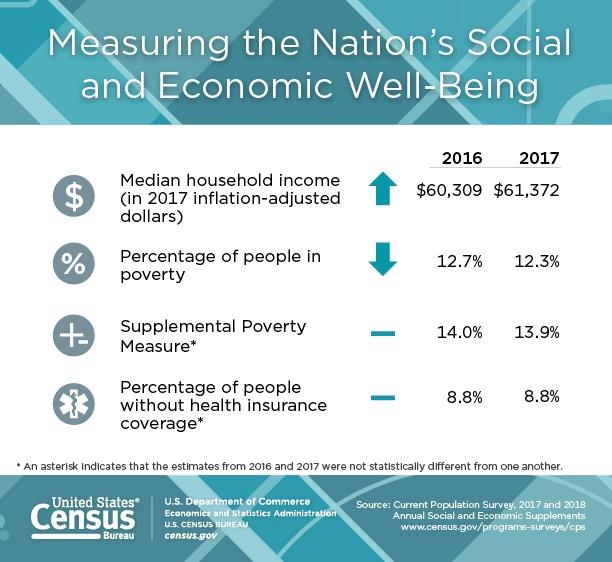The median middle-class US household earned an inflation-adjusted $61,372 last year – an increase of 1.8% over 2016 and an all-time high as it blew through the previous record set in 1999, according to a Wednesday release by the US Census Bureau. The percentage of people in poverty, meanwhile, dropped slightly from 12.7% to 12.3% – the third consecutive decline.


Inflation-adjusted median household income for Hispanic Americans, meanwhile, increased 3.7% between 2016 and 2017 – reaching its highest level on record as well at $50,486, tweets Pew Research Senior Economist, Richard Fry.
Inflation adjusted median household income for Hispanic Americans increased 3.7% from 2016 to 2017 and reached highest level on record at $50,486 https://t.co/AUOczQWhql @uscensusbureau pic.twitter.com/SZPG6heVK5
— Richard Fry (@r_fry1) September 12, 2018
Fry does point out that the Census redesigned the income questions in 2013, so the figures aren’t “strictly comparable”.
Inflation adjusted median household income at $61,372 in 2017, highest on record and topping previous 1999 peak. BUT Census redesigned the income questions in 2013, so not strictly comparable @uscensusbureau https://t.co/AUOczQWhql pic.twitter.com/QEXgHUVhOc
— Richard Fry (@r_fry1) September 12, 2018
Of note, 16.8% of adults age 25-34 live at home with their parents (who probably had big plans for their rooms).

Other highlights from the report:
The percentage of people without health insurance coverage for the entire 2017 calendar year was 8.8 percent, or 28.5 million, not statistically different from 2016 (8.8 percent or 28.1 million people). Between 2016 and 2017, the number of people with health insurance coverage increased by 2.3 million, up to 294.6 million.
The real median income of households maintained by a native-born person increased 1.5 percent between 2016 and 2017, while the 2017 real median income of households maintained by a foreign-born person was not statistically different from 2016.











Leave A Comment